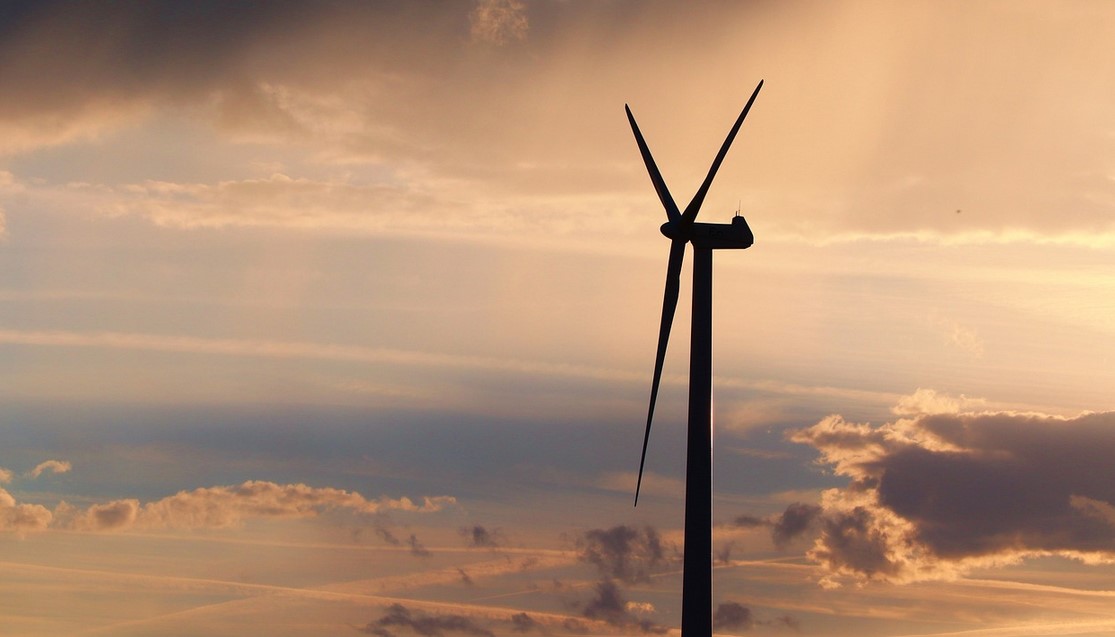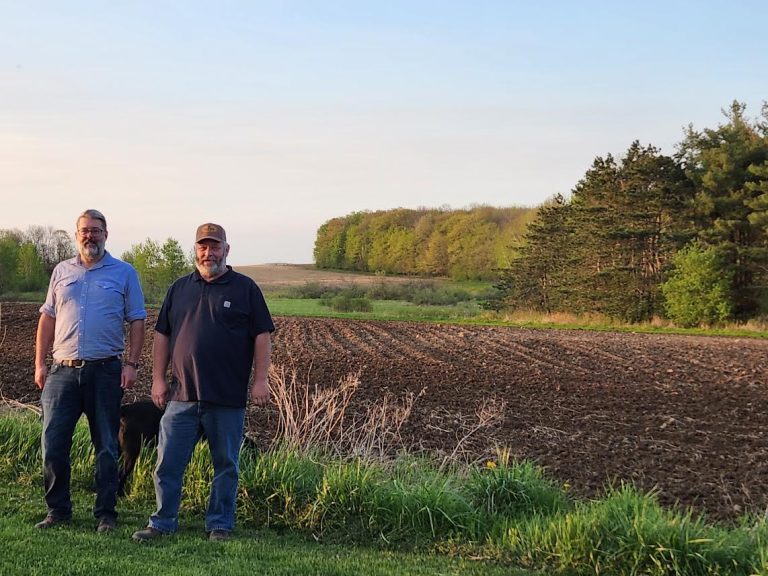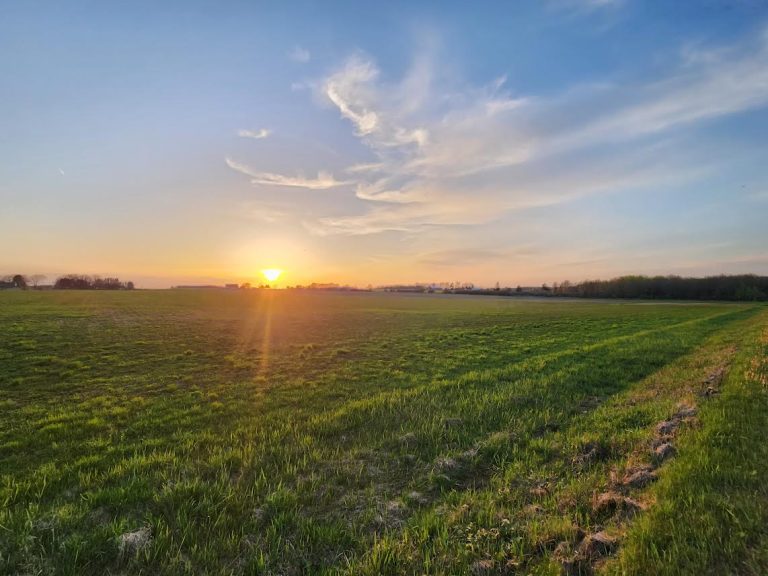 By B.N. Frank
By B.N. Frank
American opposition to wind projects on land (see 1, 2, 3, 4, 5, 6, 7) and offshore (see 1, 2, 3, 4, 5) continues to increase due to numerous significant issues associated with them. Wisconsin residents have a long history of complaints against wind turbines and their numbers are growing.
From Wind-Watch.org:
In-depth: ‘It’s criminal’: Central Wisconsin communities unite to stave off looming wind turbine industry
Central Wisconsin communities are coordinating efforts to shine a light into the flickering shadow cast by a looming wind turbine industry.
“There is a revolt happening here,” attorney Marti Machtan told The Epoch Times. “I’ve never seen our communities engage like this in my life.”
Machtan is a member of Farmland First, an organization that aims to facilitate discussion among community members concerned about reported coercive, predatory tactics used by industrial wind companies to manipulate landowners into signing their property rights away in the name of green energy.
“These companies are sneaky about it,” Tom Wilcox— also a member of Farmland First and chairman of the Town of Green Grove in Owen, Wisconsin—told The Epoch Times. “They don’t want to come right out and say how this will work. In fact, part of the reason why people don’t know this is happening is farmers have to agree to keep their mouth shut on the details of the contract.”
Wilcox is also on the Clark County Board of Supervisors and chairman of the Clark County Planning and Zoning.
This month, at least 13 central Wisconsin towns have passed health and safety ordinances setting the ground rules for companies seeking to build wind turbines up to 600 feet tall as close as 1,250 feet from their homes.
The resolutions are written to mitigate the harm wind turbines have been reported to cause to people, their land, and their natural environment, including wildlife.
Word spread after some community members openly discussed rejecting alluring offers with payoffs of over $1 million over 30 years to have a wind turbine built on their farm.
However, Machtan argued that because turbine companies can exit the contract for any reason, the possibility of actually getting that amount wouldn’t be a safe bet.
For Wilcox, there are too many unanswered questions, like how it works and what it does to property values.
Initially, Wilcox said he held the attitude that people can do whatever they want with their farm.
“But as I got further into this, I realized that these wind turbines aren’t at all good for the farming community,” Wilcox said. “As I got deeper, I realized just what kind of a sham this really is.”
‘Imbalanced, Unfair, One-Sided’
Machtan has reviewed, negotiated, and drafted over a billion dollars worth of contracts with companies of various sizes.
His assessment of the contracts between farmers and wind turbine companies like RWE Clean Energy, which has advanced into central Wisconsin, is as bad as he’s ever read.
“I don’t think I’ve ever seen one that was more imbalanced, unfair, or one-sided to the benefit of the company and to the detriment of the farmer,” Machtan said.
Many provisions in these contracts give more power to the wind company over the land than the property owner.
The wind company can get out of the contract at any time for any reason, while the farmer must commit to decades worth of encumbrances, Machtan said.
“There are liability shifting provisions for the big multi-billion-dollar multinational companies that shift risks onto these farmers,” he said.
There are also inadequate decommissioning standards, he added.
“One of the things people are worried about is, because this type of energy production really doesn’t make sense over the long term, there’s the risk that farmers are going to be left holding the bag,” Machtan said.
There’s no mutual sharing of opportunity and risk, Machtan said, leaving him to conclude that these aren’t green-energy projects.
“This is financial engineering designed to shift risk on the farmers and our communities while providing large stable returns to private equity,” Machtan said. “What’s actually driving them is pension funds and other investors trying to get a stable return for their shareholders with as little risk as possible with the support of our federal and state government.”
The ESG Framework
Electricity derived from wind is advertised as a clean departure from dependence on fossil fuels, the burning of which is argued to be the source of what some believe to be global warming.
In 2021, President Joe Biden signed into law the Bipartisan Infrastructure Bill and in 2022, the Inflation Reduction Act, both of which incentivize federal and corporate investment in creating a renewable energy industry, a component of the environmental, social, and corporate governance (ESG) framework.
Despite Biden’s proclamation that green energy companies would be domestically sourced, foreign shareholders and big banks are set to profit the most from these companies headquartered in the United States.
The largest shareholder of RWE Clean Energy—a subsidiary of the German parent company RWE—is Qatar Holding LLC, headquartered in Qatar.
“The maddening thing is that politicians can say, ‘American companies are investing in clean energy,’ and technically be telling the truth, but the parent companies or major investors or both are foreign,” Machtan said.
A Health Hazard
Just three years after wind turbines were installed in northeast Wisconsin in Brown County, they were declared a human health hazard by the county board of health in a unanimous vote in 2014, according to the Brown County Citizens for Responsible Wind Energy (BCCRWE).
To date, the declaration hasn’t been rescinded.
In 2015, former Brown County Health Director Chua Xiong ruled that there was insufficient evidence to link wind turbines to the illnesses reported by people who lived near the Shirley Wind Power, owned by Duke Energy.
BCCRWE called for her resignation, alleging she based her conclusion on a “very flawed process by which submitted evidence was selectively reviewed and inconsistently weighed, or ignored altogether.”
“The document demonstrates that Xiong’s evidence-review process was fraught with a multitude of failures of due diligence and that her resulting conclusion is without merit,” BCCRWE said.
She resigned three months after her decision, according to a 2016 news report, to take another job.
In a documentary produced by BCCRWE, Kevin Aschenbrenner, a former farmer, discussed how the wind turbines affected his livestock.
Aschenbrenner lost all his cattle, he said, to injury and eventually death. Before that, they ceased producing milk.
“It just got to the point where we just couldn’t survive anymore on the cattle, and we didn’t want to put the cattle through all of the effects they were getting off the turbines,” Aschenbrenner said.
William Acker, an energy engineer, said in the documentary that those effects are caused by the pressure pulsations in the infrasound range, “which is basically inaudible noise.”
“Infrasound is a very low hertz level noise—you can probably hear it in kids’ car stereos nowadays with a very loud booming noise that’s in the infrasound range,” he said. “Infrasound can be audible if the noise level is very high, but what we’re recording from the wind turbines is showing it to be, for the most part, in the inaudible range.”
Families reported sleep disturbances, ear pain, headaches, dizziness, and chest pain.
“There’s just a litany of symptoms that are universal; for example, they’re not just here in Shirley Wind, they’re all over the world,” said Jay Tibbetts, a now-deceased medical physician.
BCCRWE spokesperson Steve Deslauriers told The Epoch Times that landowners—in being distracted by the money—miss the details of the contract that essentially robs them of their property rights and their community’s health.
“Once you sign up your property, you lose control, not only of the exact placement of the turbines, but you also lose your ability to build, plant trees, and make decisions about the land you still own, but no longer control,” Deslauriers said.
The companies feed on ignorance and greed, he said, using deceitful tactics.
“Every time they go into a new community, they walk up to homes and say, ‘Hey, look, your neighbors are already signed up, and since you’re going to get the impacts anyway, you might as well sign up and get paid for it, too,” Deslauriers said. “They use that same playbook ever since they started in Wisconsin, signing up town officials and running over the townspeople.”
What Deslauriers has seen in the past is companies offering proactive payments in which farmers could sign up their whole property, giving them monthly payments.
“When the turbines are built, they get X number of dollars per turbine,” Deslauriers said.
Now, at least from what he’s seen, landowners are being offered payment per megawatt.
“To put it in perspective, the eight turbines at Duke Energy’s Shirley Wind Power are two-and-a-half megawatt turbines,” he said. “At the time, they were the largest turbines in the country in close proximity to homes. This led to three families being forced from their homes due to conditions in and around their homes. Now the payments look more attractive to landowners but have no doubt; this will lead to even more home abandonment in densely populated communities like ours.”
The companies suggest that there’s such a good community presence that they’ve decided to minimize the risks and maximize the payments to landowners by putting up five- to six-megawatt turbines on their property, Deslauriers explained.
“If you do the math on the money, what they throw at these farmers is just peanuts compared to what the companies make,” Deslauriers said. “No Invenergy executives live around a turbine. They sacrifice our families’ health for their wealth. These are the most horribly one-sided contracts you’ve ever seen.”
In response to The Epoch Times’ request for comment, a spokesperson for Duke Energy said there’s no evidence that Shirly Wind Power is negligent about causing harm to its neighbors.
“To the contrary of these allegations, court decisions over the past few years continue to support Duke Energy’s position on this issue,” the spokesperson said. “Duke Energy continues to be an important part of Brown County and Town of Glenmore communities endeavoring to work cooperatively as a contributor in a major way to support the residents in their furtherance of various community initiatives and acting consistently and responsibly as we progress towards our clean energy efforts.”
The Starbucks Rule
In these rural areas where the wind turbines are targeted to be constructed, Machtan and others have pointed out that farmers lack adequate legal representation and understanding of the deceptive nature of the contracts.
Farmers can be even more clouded by the money if they are struggling to stay afloat.
In a “Tucker Carlson Originals” documentary, Kevon Martis, a Michigan-based zoning administrator who advocates against the building of wind turbines, explained “The Starbucks Rule.”
“Never try and site a wind project within 30 miles of a Starbucks coffee shop,” Martis explained. “The demographic that’s willing to pay a premium price for quality coffee is the same demographic that typically has the education and financial wherewithal to organize and resist irresponsible wind projects.”
Companies see these rural areas like Wilcox’s township as an easy target because they are low-income, which translates to them as people desperate for revenue.
Wilcox said he discovered northeastern Clark County was labeled as an economically depressed area when looking for federal grants for broadband.
“There are extra subsidies involved if companies build these projects in those regions,” Wilcox said.
However, when wind turbine projects are proposed in wealthy areas such as Nantucket Sound, politicians with homes in that area quickly shut the project down.
“People who look at some of these wind proposals figure out quickly that one of the reasons their community is being targeted is it’s poor, and they’re perceived as being desperate for revenue,” Martis said in the documentary. “They just think we’re a bunch of rubes and hicks out here.”
‘It Only Gets Worse’
Different people have different objections to what potentially might take place if the turbines are built in Wilcox’s township, he said.
For many with whom he’s spoken, the destruction of the endangered bald eagle and other birdlife concerns them, he said.
Clean energy companies like RWE have been granted what’s called an incidental take permit, which is used under the U.S. Endangered Species Act to protect these companies from liability when endangered wildlife is harmed.
“They have an incidental take permit that basically says, ‘When an eagle flies into the turbine and gets killed, we’re sorry, but we’re not liable,’” Wilcox said. “It always interests me that some people latch on to this portion of it.”
Though there aren’t a lot of eagles in the area, Wilcox said they’d like to keep the ones they have.
“But to have an industrial wind complex come in and kill more eagles than I’ve seen in a year, that’s really troubling for us,” he said.
For others, it’s about the aesthetics, he said.
“We have beautiful sunsets here in central Wisconsin, and occasionally you can see the northern lights,” Wilcox said. “But if you have a spinning wind turbine with that flashing red light, it’s going to detract from that aspect of life.”
Others latch onto the complaint about decreased property values caused by the turbines, he said.
If given a choice between a farm with a turbine and a farm without, buyers prefer going without, he said.
People look at the cost benefits—how much the company is potentially going to make compared to how much the landowner will make.
Then there is the shadow flicker, the movement of the shadow from the turbine passing through people’s homes in a steady but dizzying rhythm.
“People say you can pull the blinds, but why should you pull the blinds in your home for something you didn’t even want in the first place and aren’t getting any benefit from?” Wilcox asked. “And, of course, when you go outside, it only gets worse.”
‘It’s Criminal’
According to Deslauriers, because of state legislation lobbied for by the turbine companies, municipalities have been stripped of the power to prohibit the construction of wind turbines in their townships through zoning regulations.
“The legislature took the power away, and the state of Wisconsin promulgated rules that said towns could not make rules any stricter,” he said. “Now, if you’re a village or city, you can exercise home rule and say no, but rural towns cannot.”
That authority is with the state through the Public Service Commission of Wisconsin (PSC), Deslauriers said, which writes the rules allowing turbine companies to ignore property rights and the health of families.
“This leaves communities to focus their fight on the devasting health and safety impacts,” Deslauriers said.
Townships pay a heavy price just to fight the projects, Deslauriers said.
“The money that we went through locally to stop it last time was an incredible expense for blue-collar families,” Deslauriers said.
Still, they keep fighting, with little sign of relief from lawmakers on either side of the aisle.
“The rules that have been put in place are the worst statewide rules in the country,” he said. “It’s the small individual communities that are bearing the massive cost to fight these international wind companies.”
Lawmakers—both Republican and Democrat—refuse to return the power to regulate wind development to the communities where impacts are felt, he said.
“These communities have been left to use their very limited resources to fight these guys with all their might, and it’s bankrupting people,” Deslauriers said. “Wind developers leave families split, neighbors fighting, and communities broken. It’s criminal.”
The Epoch Times contacted RWE Clean Energy, Invenergy, and PSC of Wisconsin for comment.
Source: By Matt McGregor | May 19, 2023 | theepochtimes.com
This article is the work of the source indicated. Any opinions expressed in it are not necessarily those of National Wind Watch.
The copyright of this article resides with the author or publisher indicated. As part of its noncommercial effort to present the environmental, social, scientific, and economic issues of large-scale wind power development to a global audience seeking such information, National Wind Watch endeavors to observe “fair use” as provided for in section 107 of U.S. Copyright Law and similar “fair dealing” provisions of the copyright laws of other nations. Send requests to excerpt, general inquiries, and comments via e-mail.
Activist Post reports regularly about wind power and unsafe technologies. For more information, visit our archives.
Top image: Pixabay
Become a Patron!
Or support us at SubscribeStar
Donate cryptocurrency HERE
Subscribe to Activist Post for truth, peace, and freedom news. Follow us on SoMee, Telegram, HIVE, Flote, Minds, MeWe, Twitter, Gab, What Really Happened and GETTR.
Provide, Protect and Profit from what’s coming! Get a free issue of Counter Markets today.



Be the first to comment on "Communities Revolt Against “coercive, predatory tactics” By Wind Companies, State Legislation that Reduced Their Ability to Stop Development"